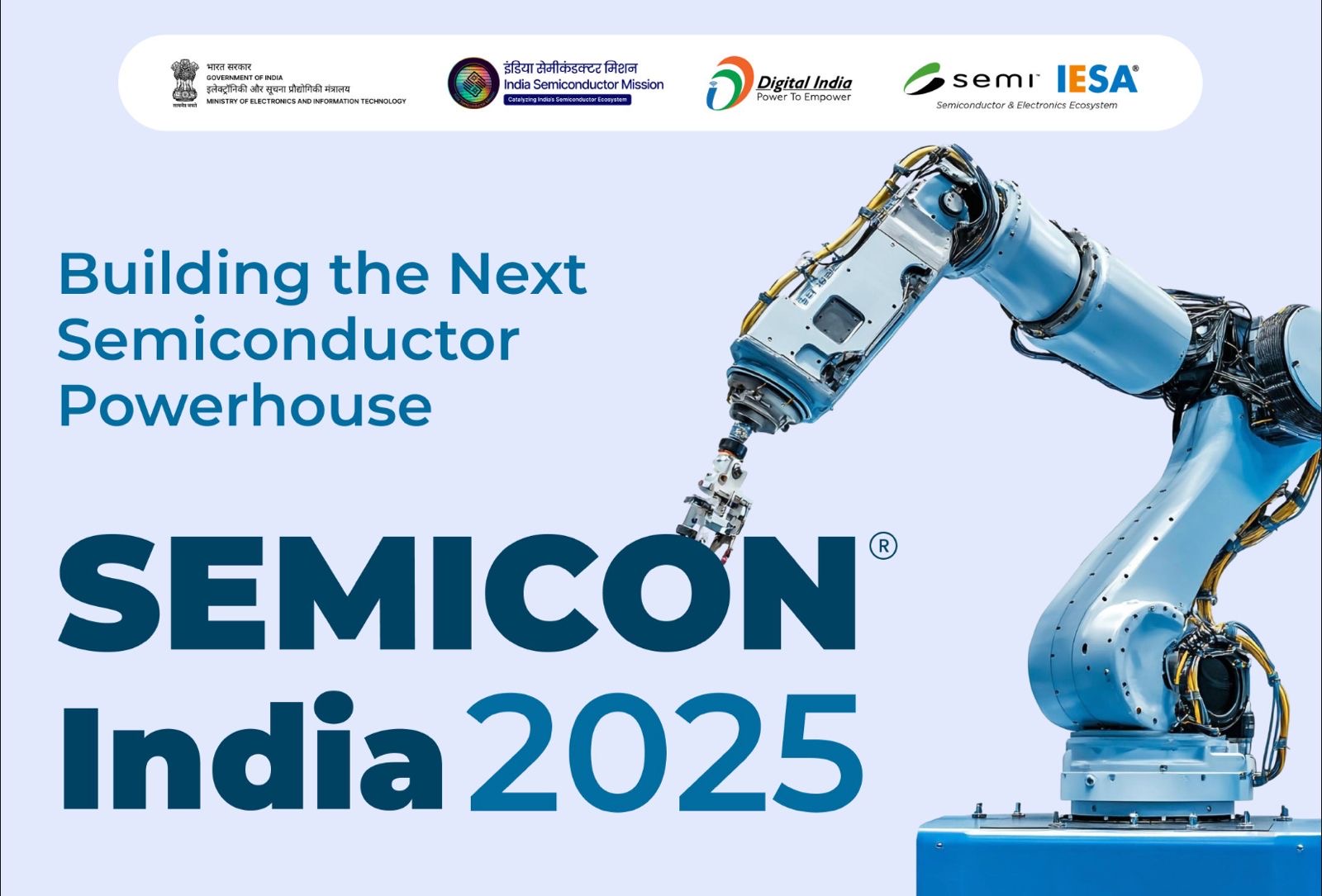Prime Minister Narendra Modi today inaugurated SEMICON India in New Delhi, marking the beginning of a landmark three-day event that aims to catalyse India’s semiconductor ecosystem via strategic collaborations and global partnerships. He will also participate in a CEO roundtable on 3rd September, underlining the government’s commitment to transforming India into a resilient semiconductor powerhouse.
Semiconductors are the invisible engines powering everything from healthcare and defense systems to advanced AI and space missions. Recognising this, India launched the India Semiconductor Mission (ISM) in 2021, backed by a ₹76,000-crore Production-Linked Incentive (PLI) framework, of which nearly ₹65,000 crore has already been committed.
Under ISM, ten strategic semiconductor projects across domains such as high-volume fabs, advanced packaging, Silicon Carbide (SiC) technologies, and OSAT facilities have received government approval.
A major milestone occurred on 28th August in Gujarat’s Sanand: the inauguration of India’s first end-to-end Outsourced Semiconductor Assembly & Test (OSAT) pilot facility. Built by CG-Semi, the G1 line will deliver 0.5 million chips a day, while the upcoming G2 line will scale production up to 14.5 million, creating over 5,000 skilled jobs. India expects its first ‘Made in India’ chip to roll out from this facility by the end of 2025.
To boost indigenous chip innovation, the Design Linked Incentive (DLI) scheme has approved 23 chip-design projects, enabling startups like Vervesemi Microelectronics to create advanced chips for EVs, defense, aerospace, and energy applications.
SEMICON India 2025, positioned under the theme “Building the Next Semiconductor Powerhouse,” brings together over 350 exhibitors, 2,500 delegates from 48 countries, more than 150 speakers, and over 20,750 attendees. The event features dedicated pavilions for workforce development and startups, six international roundtables, country pavilions, and sessions on fabs, advanced packaging, smart manufacturing, R&D, AI, sustainability, and investment strategies.
Highlighting India’s institutional push, ISM supports more than 280 academic institutes and 72 startups with state-of-the-art design tools, fueling research, collaboration, and talent development.
With India getting ready to bring chips designed, packaged, and produced within its borders, PM Modi’s bold declaration, “When the chips are down, you can bet on India,” resonates louder than ever.
Through strategic investment, infrastructure development, innovation, and international engagement, India is shaping its semiconductor future, setting the stage for Atmanirbhar Bharat and a self-reliant global semiconductor leadership.










